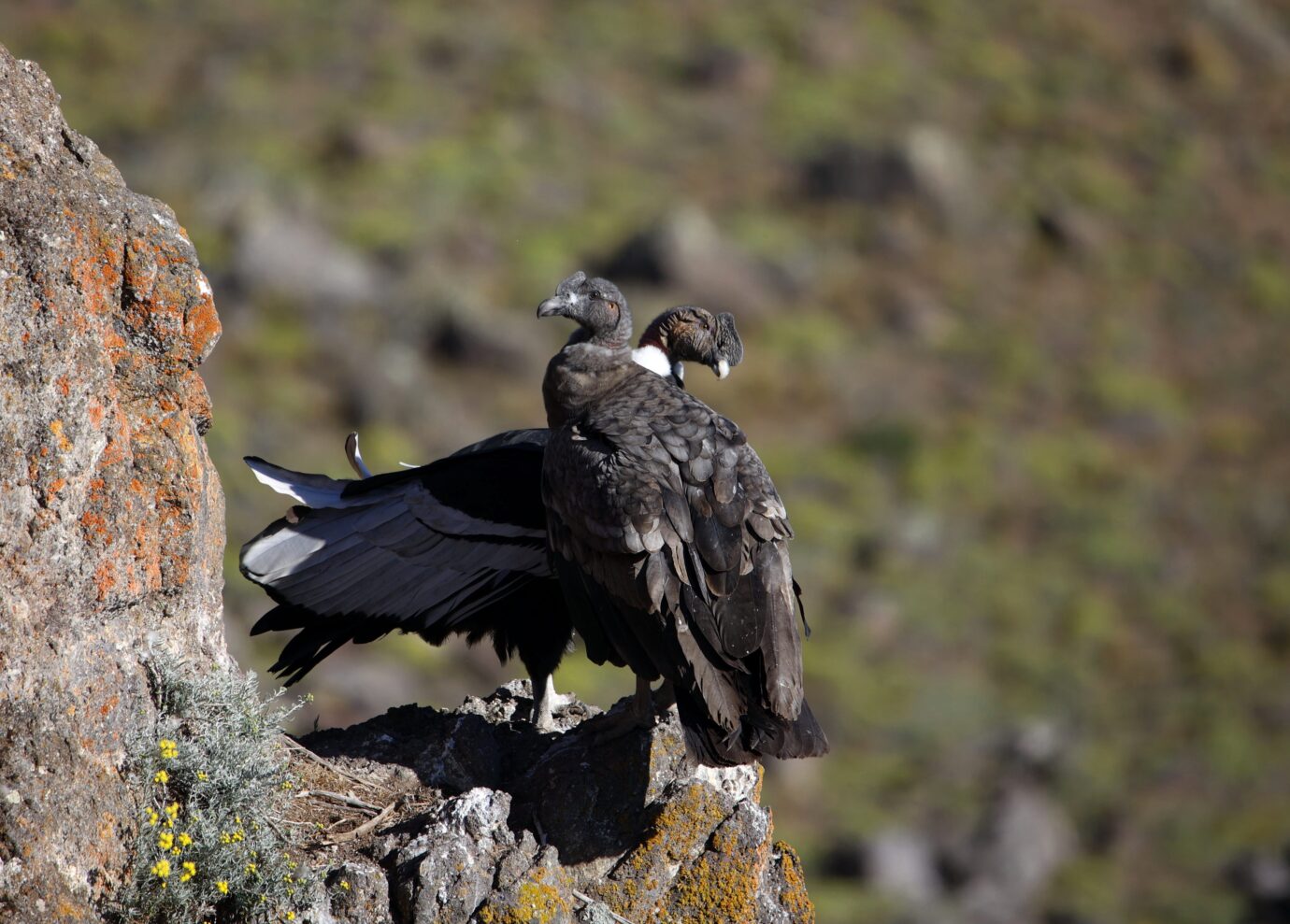
Foto: Patagonia Big Five
The monitoring of six condors released in Patagonia National Park, following a rehabilitation process, provides key information to understand their dynamics and strengthen conservation plans. The species, classified as Vulnerable, faces serious threats such as poisoning, hunting, collisions with power lines, and the decline of its food sources.

Foto: Patagonia Big Five
The Andean condor, with its three-meter wingspan, soars over the Andes in search of carrion. In doing so, the condor fulfills a vital ecological role as the great “cleaner” of Andean ecosystems. However, the species faces a complex situation: the International Union for Conservation of Nature (IUCN) has classified it as Vulnerable at the global level. Its main threats are human in origin, including poisoning, hunting, food scarcity, and, more recently, collisions with wind turbines in wind farms.
In this context, Fundación Rewilding Chile, Filantropía Cortes Solari, and Aves Chile, with the support of the National Zoo and SAG (the Chilean Agricultural and Livestock Service), have joined forces in the Manku Project, a collaborative effort to conserve the Andean condor.
As part of these efforts, condors are bred and rehabilitated every year at the Center for the Rehabilitation of Birds of Prey (CRAR), after which they are released in Patagonia National Park in the Aysén Region or in the Likandes Elemental Reserve in central Chile. In Chile, the main condor populations are found in the central zone and in Patagonia, which holds about 70% of the species’ national population.
“Releasing condors in the far south is highly beneficial, as they have abundant food and allow us to study their ecology in an almost pristine environment. In central Chile, a more densely populated area, we also rehabilitate and monitor them. Understanding these differences is key to addressing the challenges of their conservation,” explains Cristián Saucedo, Director of the Wildlife Program at Rewilding Chile.
Together, the movements of these six condors cover 350 km from north to south and 250 km from east to west, with an equal number of records in Chilean and Argentine territory. They have flown at an average altitude of 720 meters above sea level, ranging from sea level to 2,500 meters. The most frequently used environment is “Grasslands and Shrublands,” typical of the Patagonian steppe, with daily movements between 100 and 130 km, though most days they fly shorter distances.
Only 22% of these movements occurred within protected areas. In Chile, they have traveled through Cerro Castillo, Patagonia, and Laguna San Rafael National Parks, as well as Río Simpson National Reserve. In Argentina, movements have been detected within Patagonia and Perito Moreno National Parks, and the La Ascensión and Cueva de las Manos del Río Pinturas Reserves.
“Releasing condors in the far south is highly beneficial, as they have abundant food and allow us to study their ecology in an almost pristine environment. In central Chile, a more densely populated area, we also rehabilitate and monitor them. Understanding these differences is key to addressing the challenges of their conservation”
“Satellite monitoring has shown us that Andean condor conservation extends beyond the boundaries of protected areas. Understanding how they use their habitat—even in productive landscapes—is essential to developing conservation strategies that engage all territorial stakeholders,” stated Francisca Cortés Solari, Executive President of Filantropía Cortés Solari.
With support from the University of Chile, the data collected through transmitters provided jointly by Fundación Rewilding Chile and Filantropía Cortés Solari have been analyzed. The visual representation of this data has become a valuable tool for communicating findings to communities and decision-makers.
“The release marks the beginning of an extensive tracking process using radio and satellite transmitters. This not only ensures the proper reintegration of the condors into their natural habitat but also provides key information about territory use, allowing conservation actions to be more effectively guided,” explains Eduardo Pavez, Director of the Manku Project.